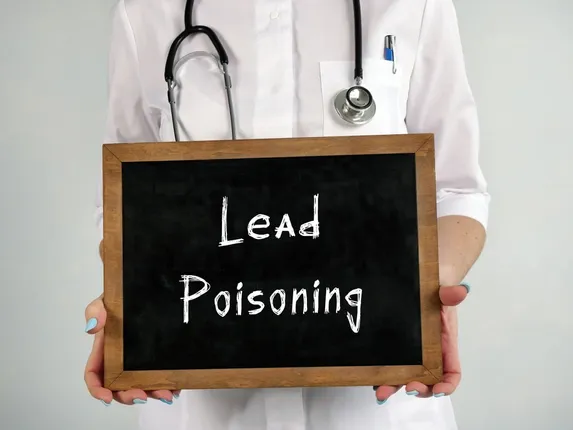Lead poisoning occurs when lead builds up in the body, often over months or years. Even small amounts of lead can cause serious health problems, especially in children under 6 years old. Lead is a highly toxic metal and exposure to it can cause a wide range of health effects.
Symptoms:
- In Children: Symptoms can include developmental delays, learning difficulties, irritability, loss of appetite, weight loss, sluggishness, abdominal pain, vomiting, constipation, and hearing loss. Severe cases can lead to seizures, coma, and even death.
- In Adults: Symptoms may include high blood pressure, joint and muscle pain, difficulties with memory or concentration, headaches, abdominal pain, mood disorders, reduced sperm count, miscarriage, and premature birth in pregnant women.
Causes:
- Lead-Based Paint: Lead-based paint in homes built before 1978 is the most common source of lead poisoning in children. When lead-based paint deteriorates, it creates lead dust that can be ingested or inhaled.
- Lead-contaminated Dust: Lead dust can also be generated by home renovation projects involving lead-based paint or lead pipes.
- Lead in Soil: Lead can be present in soil, especially in areas near highways, industries, or in older neighborhoods where leaded gasoline was once used.
- Lead in Water: Lead can leach into tap water from lead pipes, fixtures, and solder used in plumbing systems, especially in older homes.
- Occupational Exposure: Workers in certain occupations such as battery manufacturing, smelting, construction, and renovation are at risk of lead exposure.
Treatment:
- Chelation Therapy: In severe cases, chelation therapy may be necessary to remove lead from the body. This involves using medication that binds to lead and allows it to be excreted in urine.
- Supportive Care: For less severe cases, treatment involves removing the source of lead exposure and providing supportive care to manage symptoms.
Prevention:
- Regular Testing: Regular blood lead level testing is recommended for children at risk of lead exposure, especially those living in older homes or in areas with high environmental lead levels.
- Lead-Safe Practices: Renovating or remodeling homes built before 1978 should be done using lead-safe practices to prevent lead dust exposure.
- Clean Environment: Regularly cleaning floors, windowsills, and other surfaces with lead-contaminated dust can help reduce exposure.
- Nutritious Diet: Ensuring a diet rich in calcium, iron, and vitamin C can help reduce the absorption of lead in the body.
- Safe Drinking Water: Use cold, filtered water for drinking, cooking, and making baby formula, and consider installing a water filter certified to remove lead.
- Personal Protection: If working in an occupation with potential lead exposure, use appropriate personal protective equipment and follow safety guidelines.
Lead poisoning is entirely preventable, but it requires awareness, education, and concerted efforts to eliminate sources of lead exposure from the environment. Early detection and intervention are crucial to minimizing the health effects of lead poisoning, particularly in children.
































